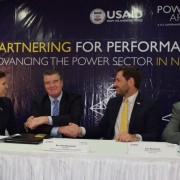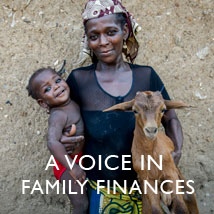Speeches Shim

On January 25, Power Africa, a U.S. government-led initiative coordinated by the U.S. Agency for International Development (USAID), which seeks to double electricity access in sub-Saharan Africa, announced a new partnership to advance the power sector in Nigeria.
Health indicators in Nigeria are among the poorest in Africa. The country
has one of the fastest growing populations globally. With 5.5 live births per woman and a growth rate of
3.2 percent annually, its population is estimated to reach approximately 410 million by 2050.
Nigeria has seen many democratic successes recently, including one of the most credible and peaceful presidential elections in the nation’s history in 2015. Newly-enacted legislation has improved transparency and access to government information. Still, improving democratic governance, addressing corruption, and reducing conflict remain major challenges.
Referred to as the “Giant of Africa,” Nigeria is the most populous country on the continent with more than 60 percent of its population under 25 years of age. Nigeria has one of the largest economies in Africa and a population of an estimated 190 million people – all of which represents tremendous potential.
With 86 million people living below the international poverty line in 2016, Nigeria had the world’s second-largest population of poor. Relatively high annual Gross Domestic Product (GDP) growth rates over the past decade have not reduced corresponding poverty rates. After the global drop in oil prices in 2014, Nigeria’s GDP fell precipitously and the country slipped into recession.



Comment
Make a general inquiry or suggest an improvement.